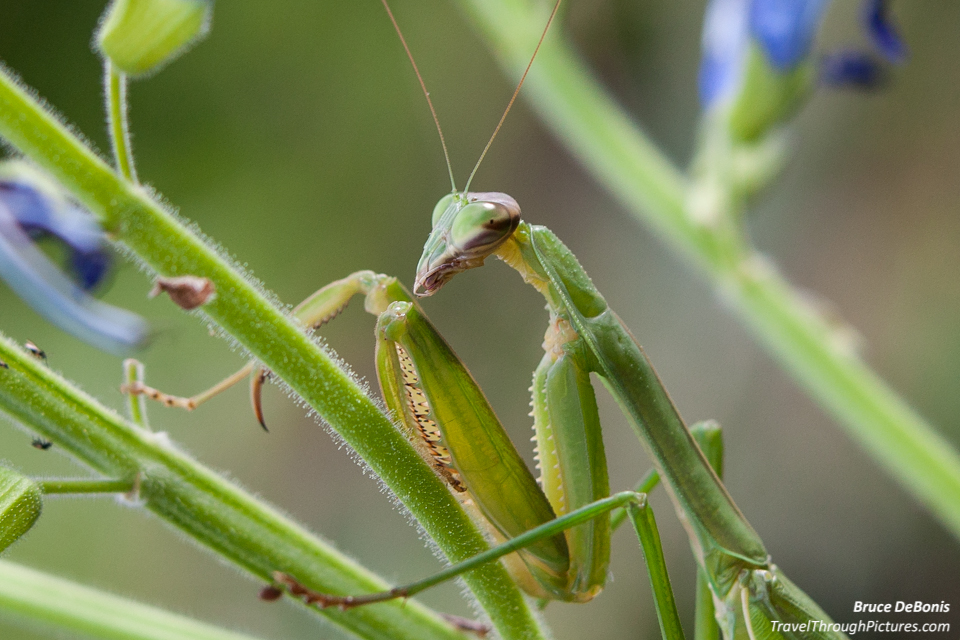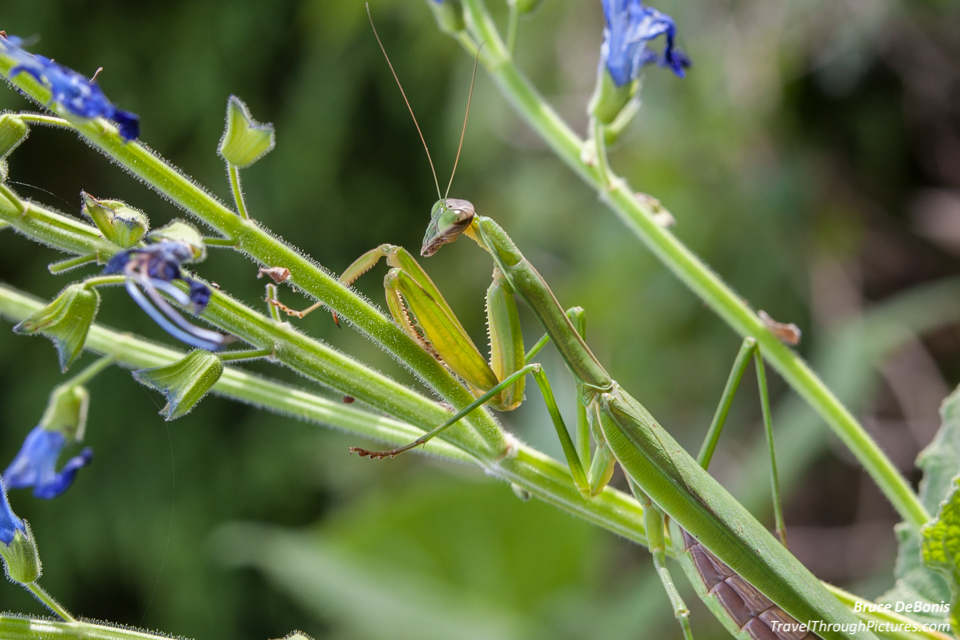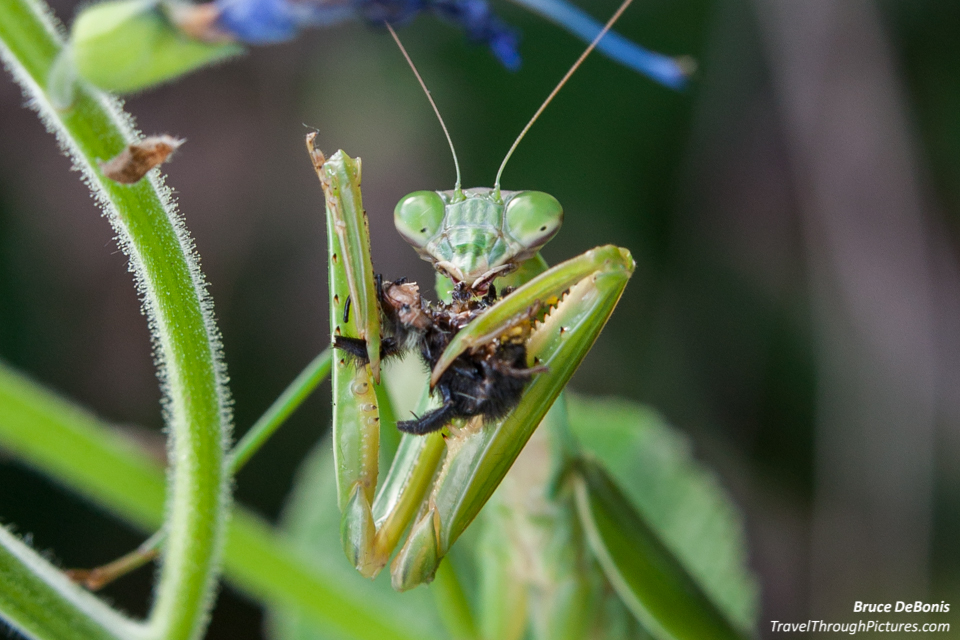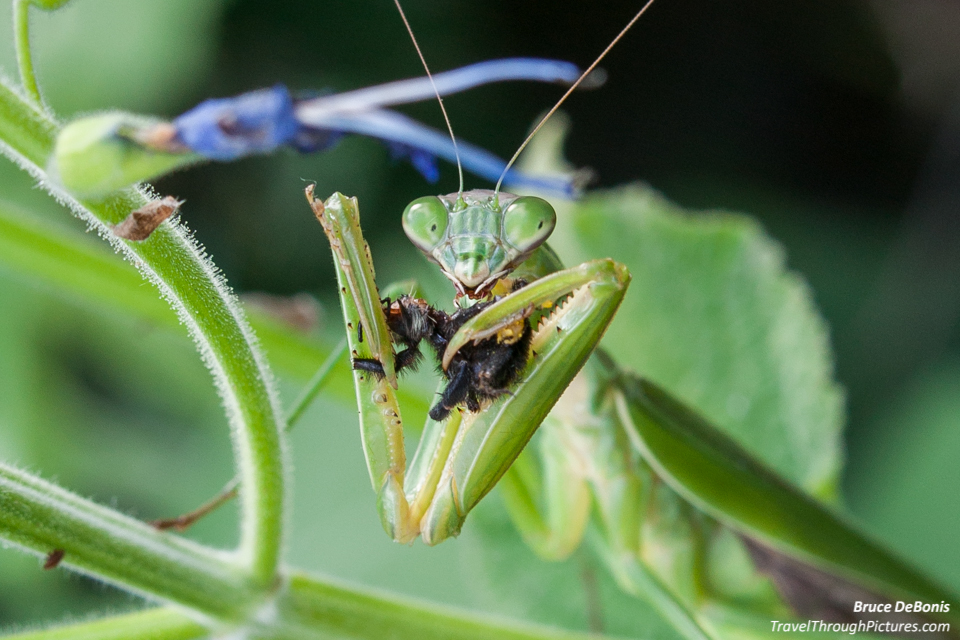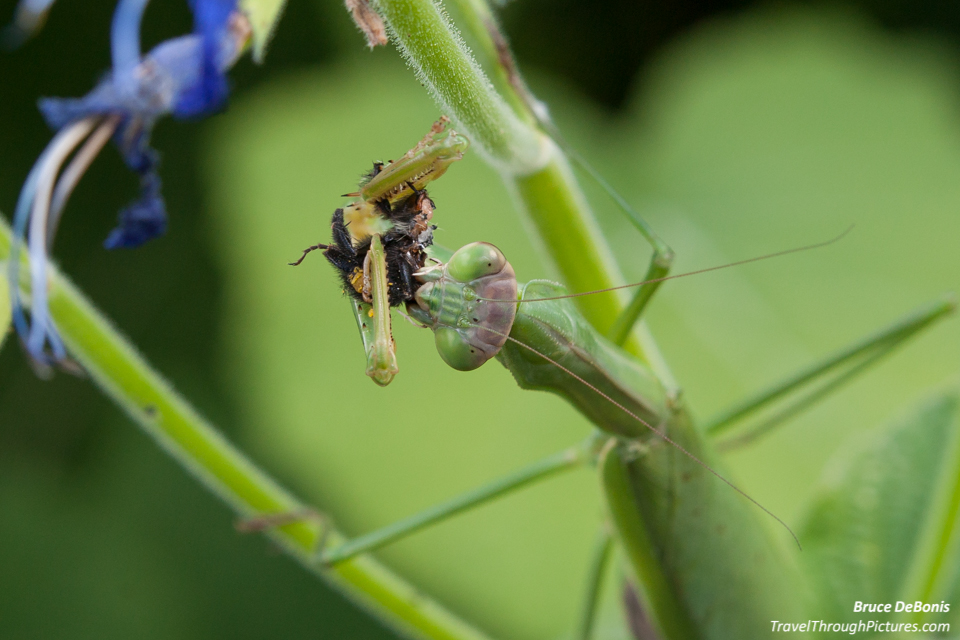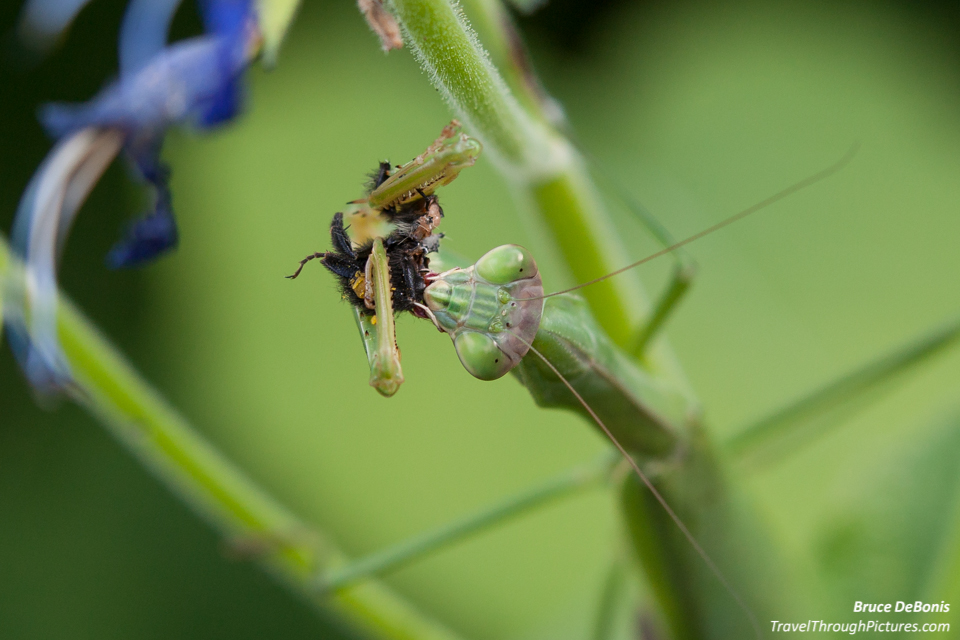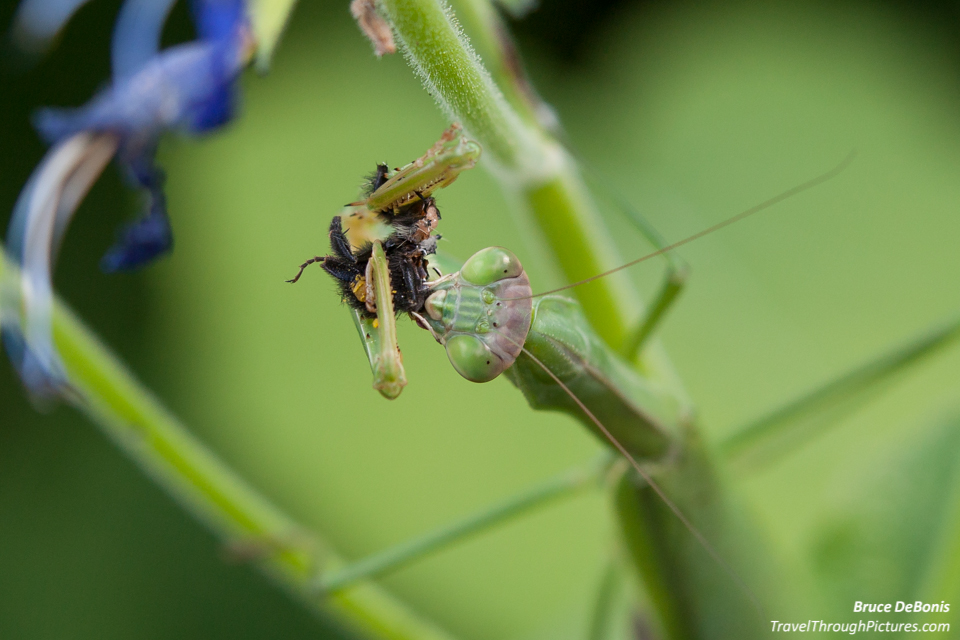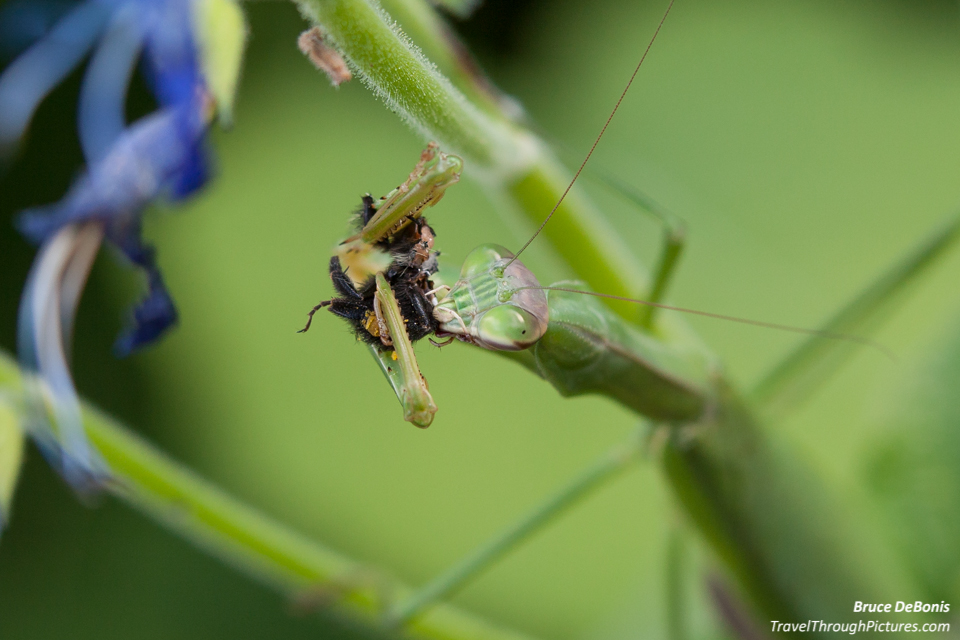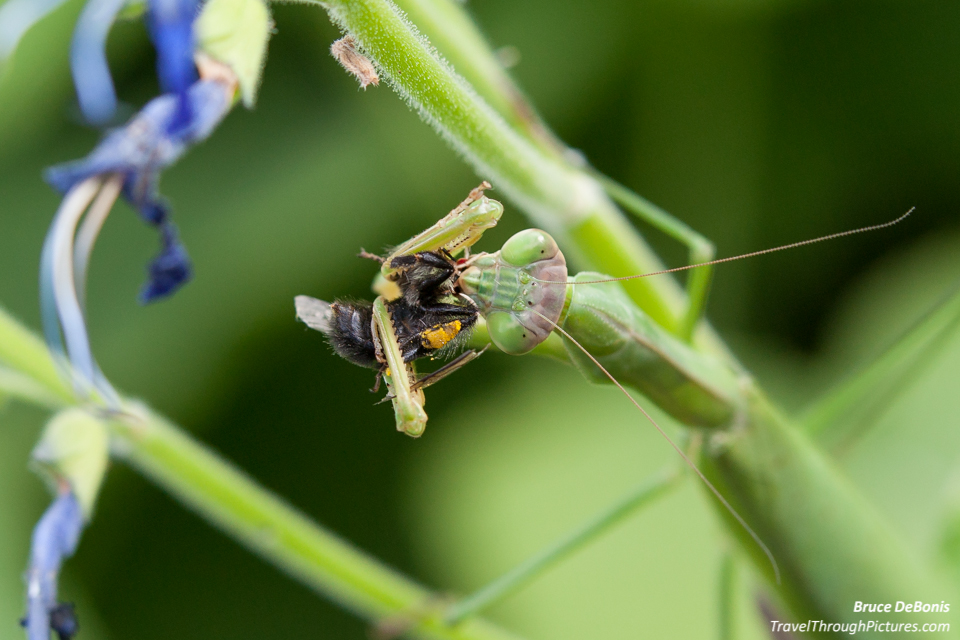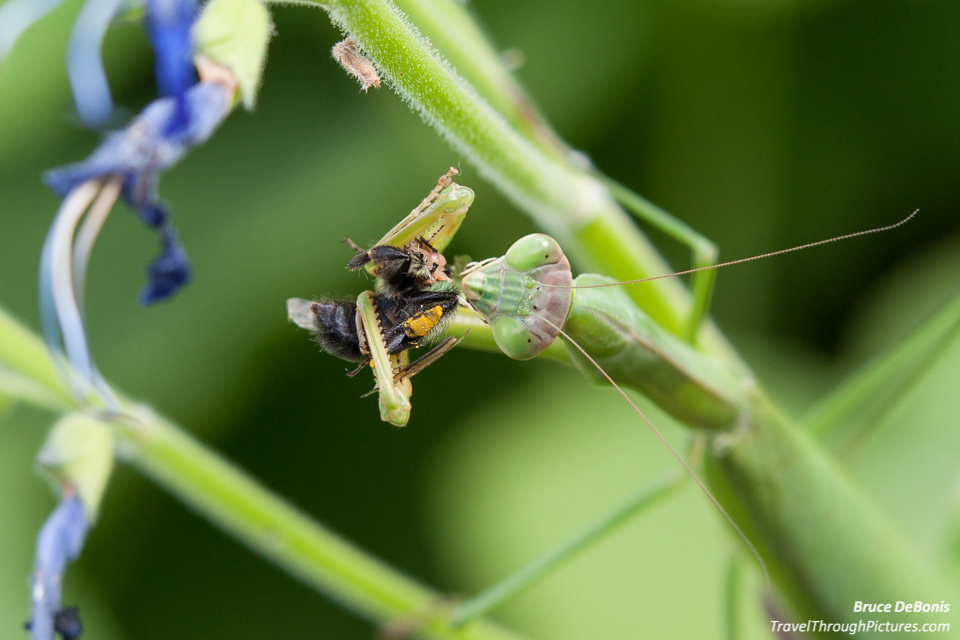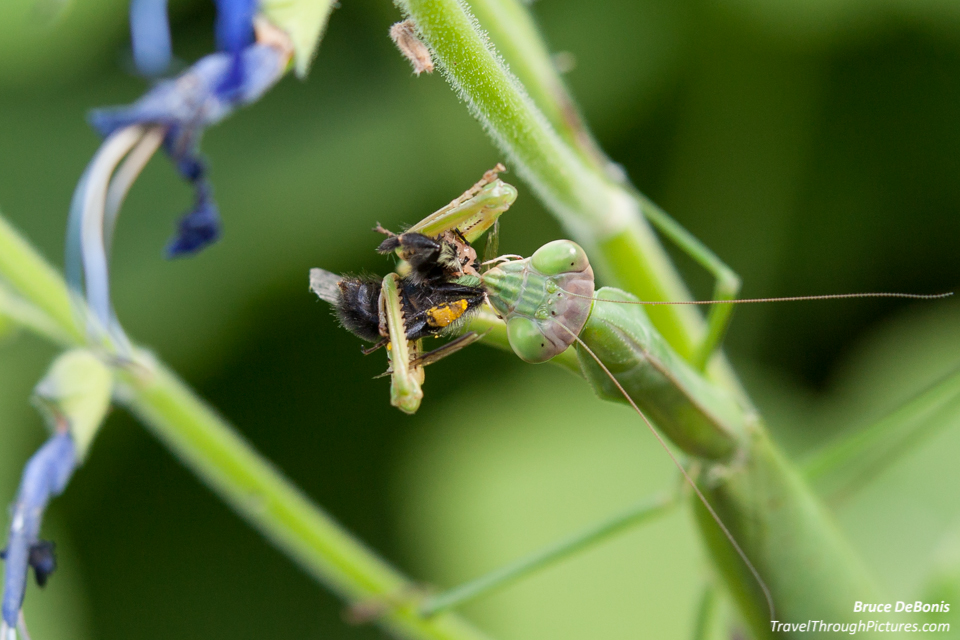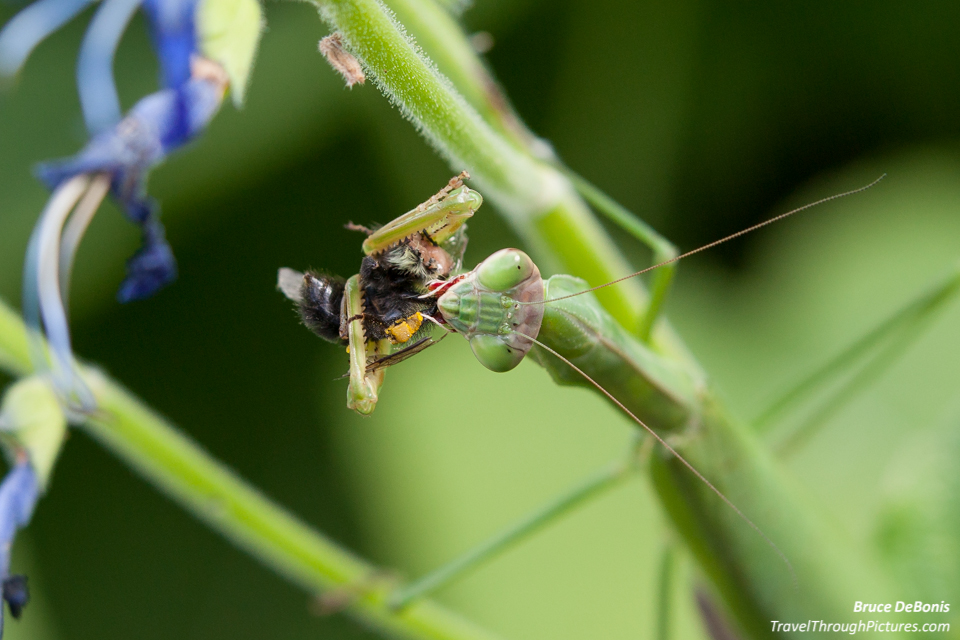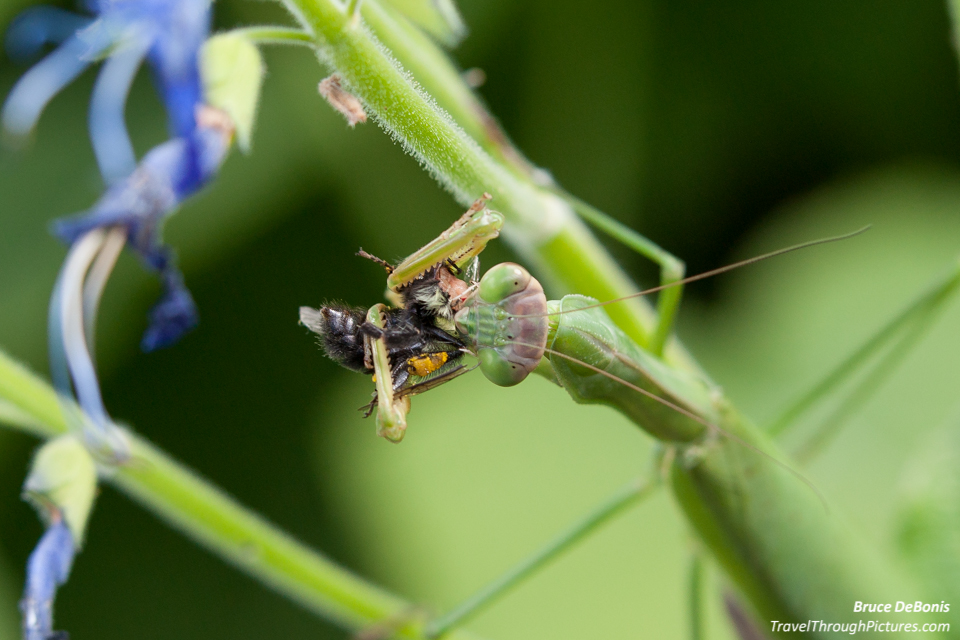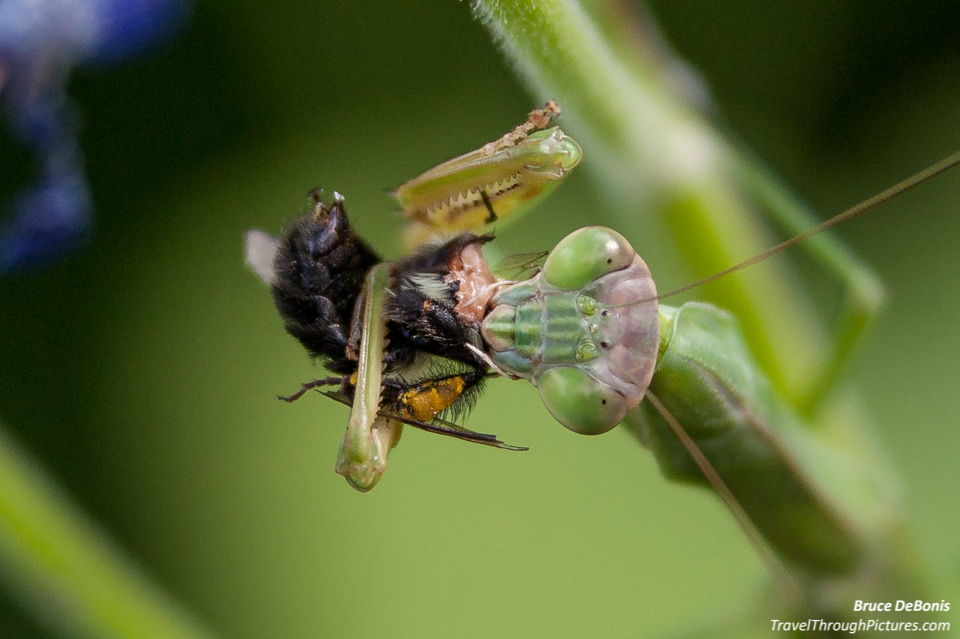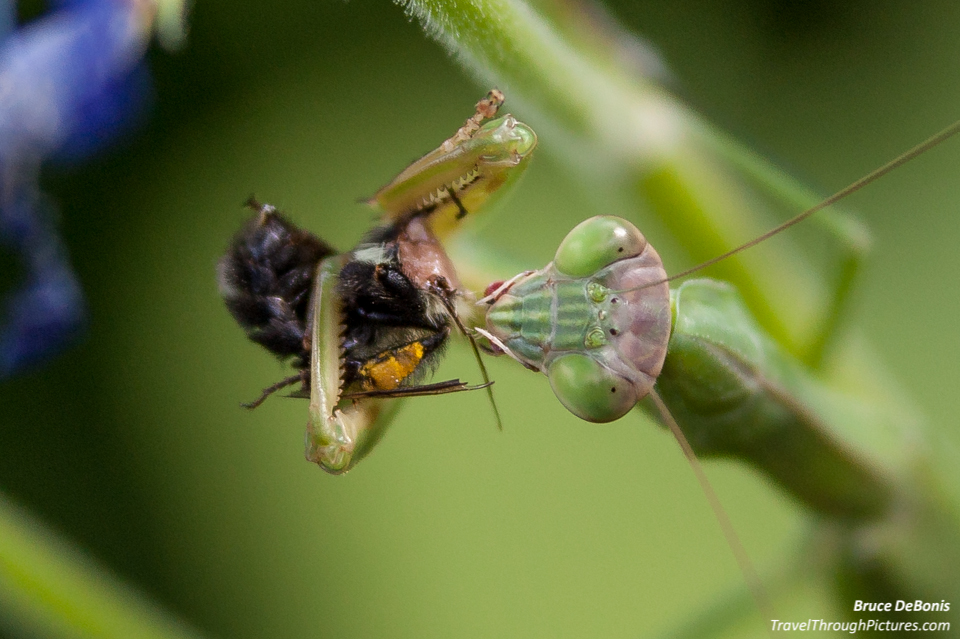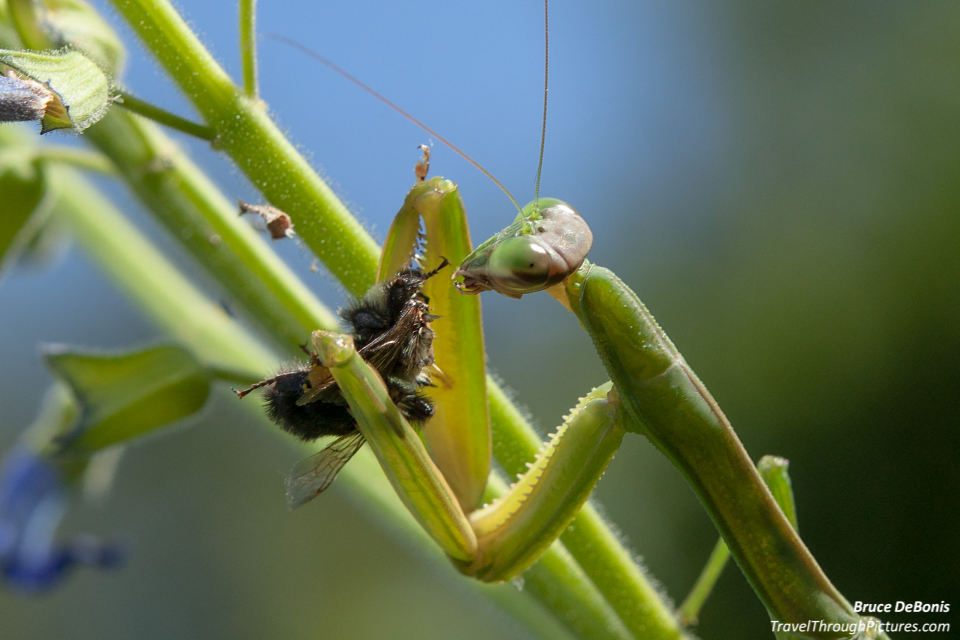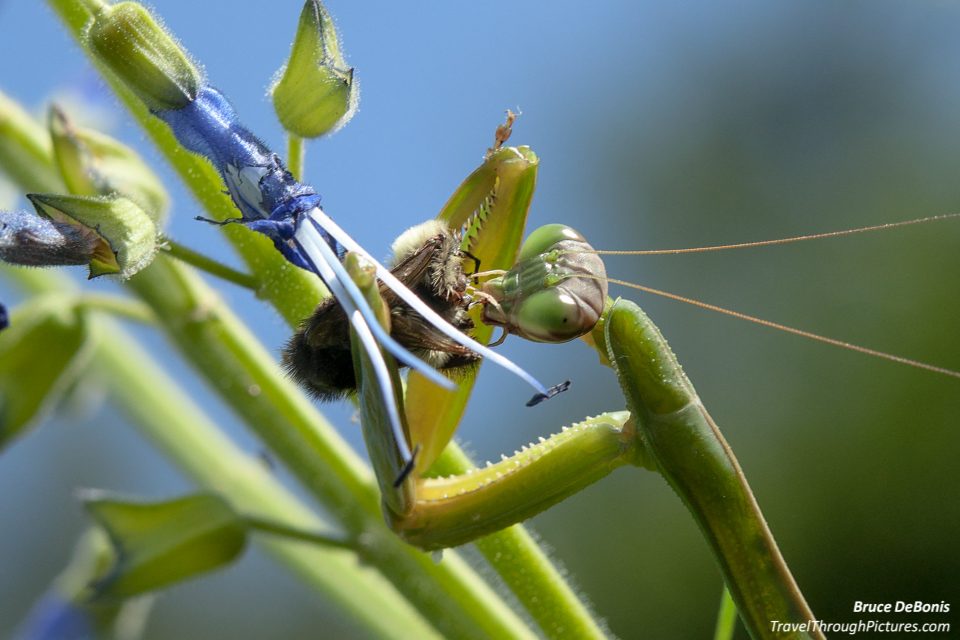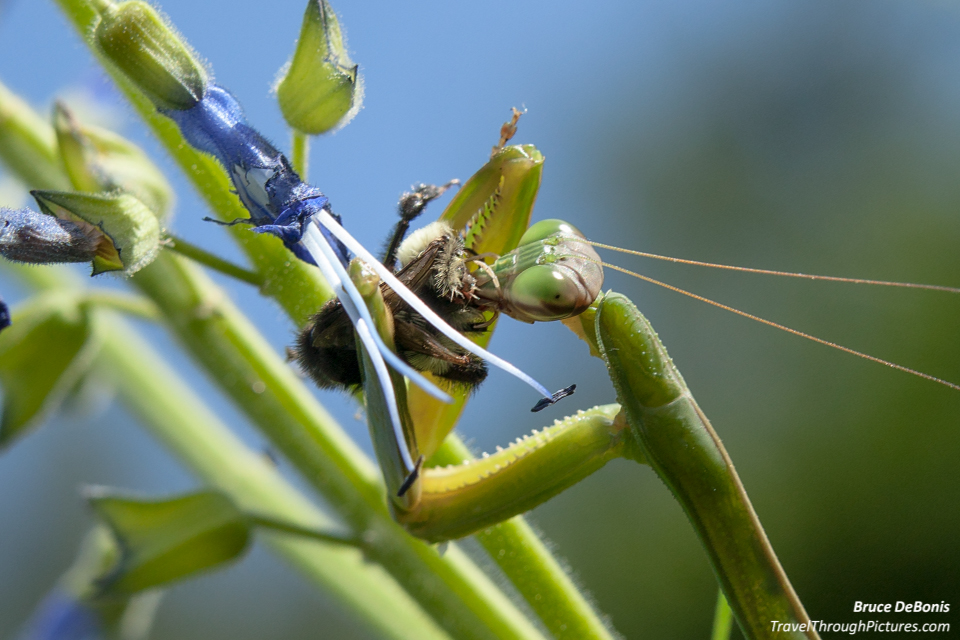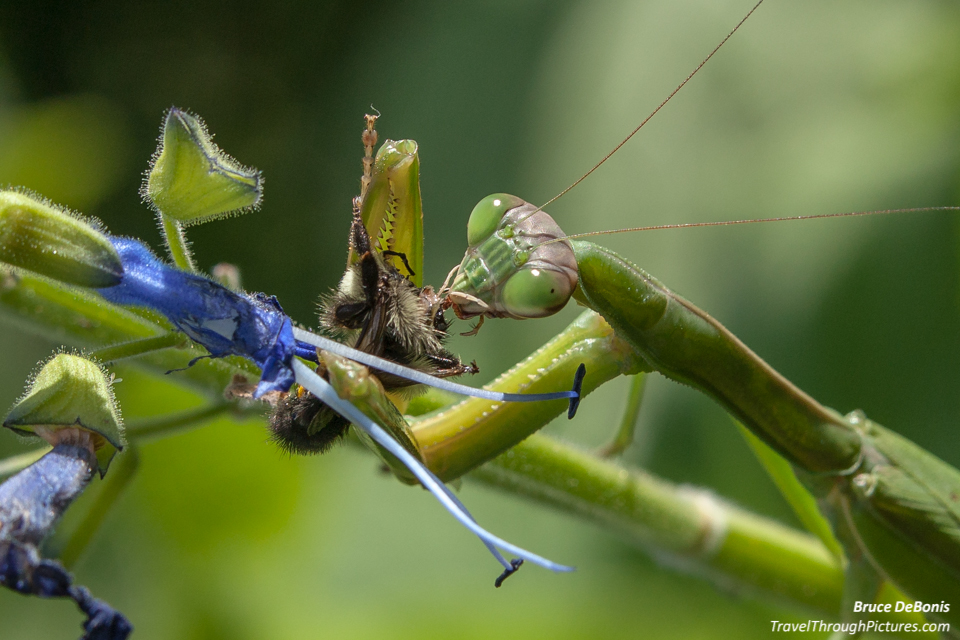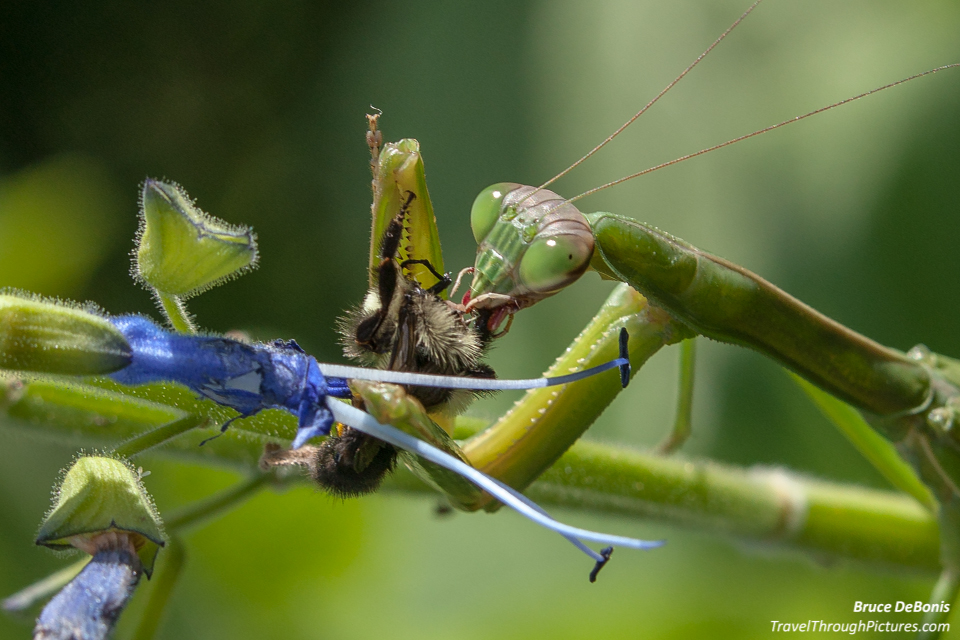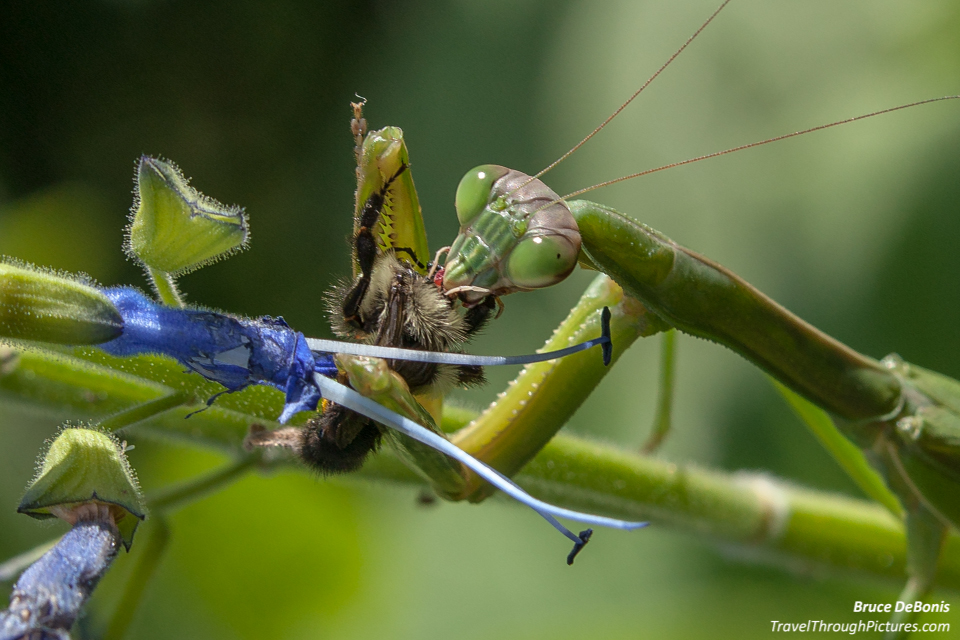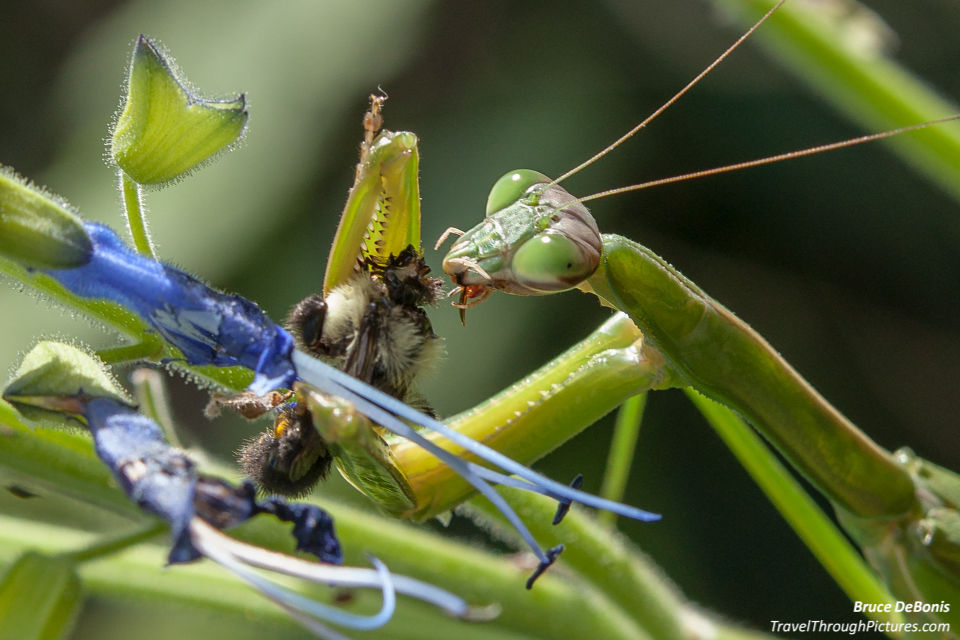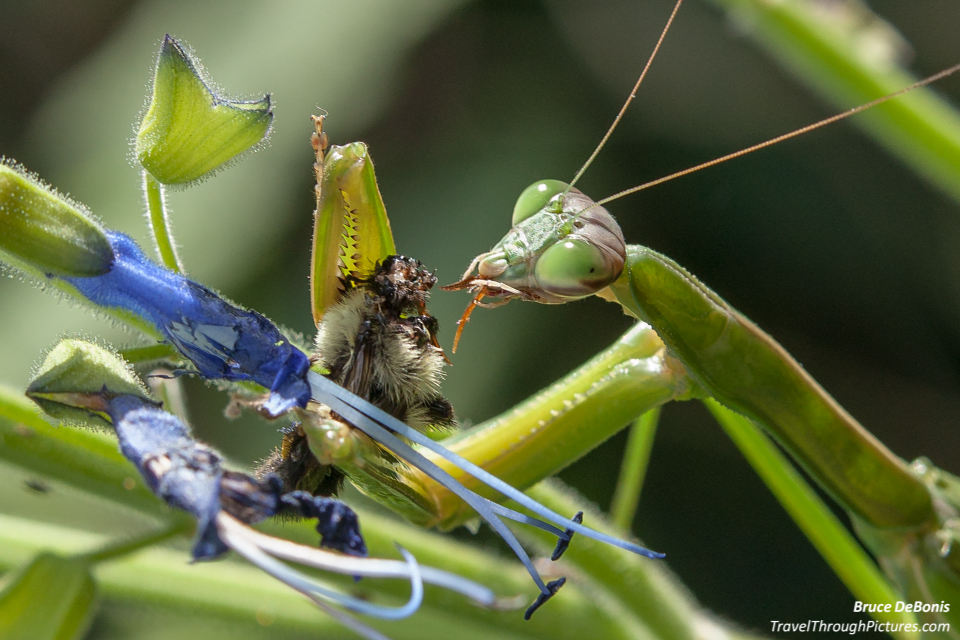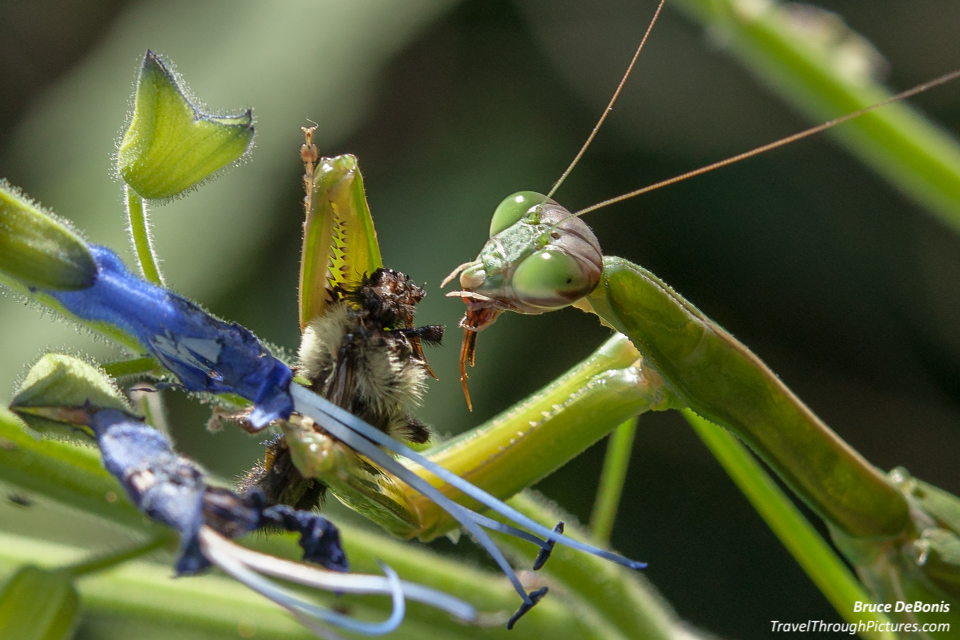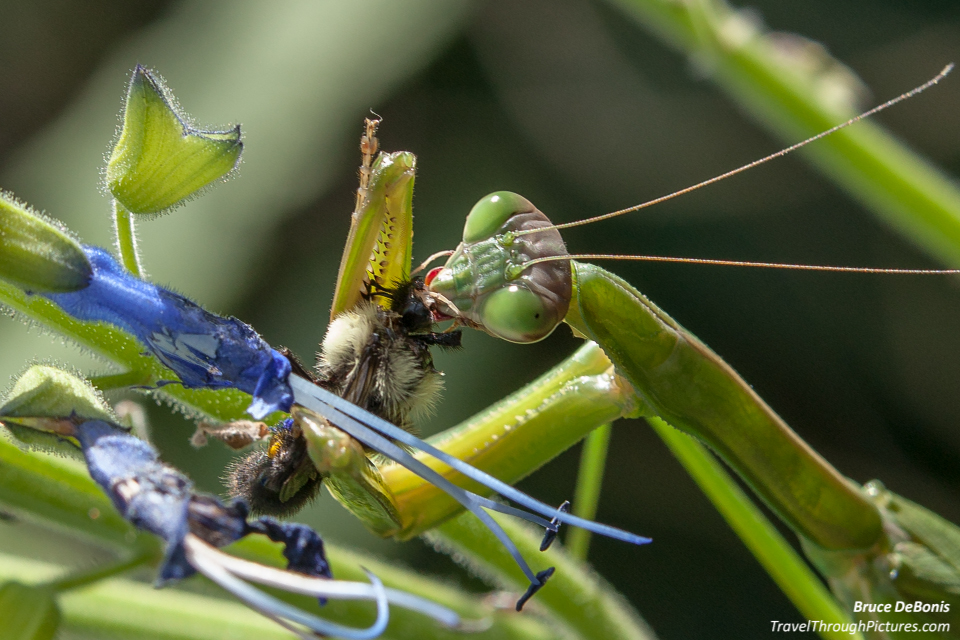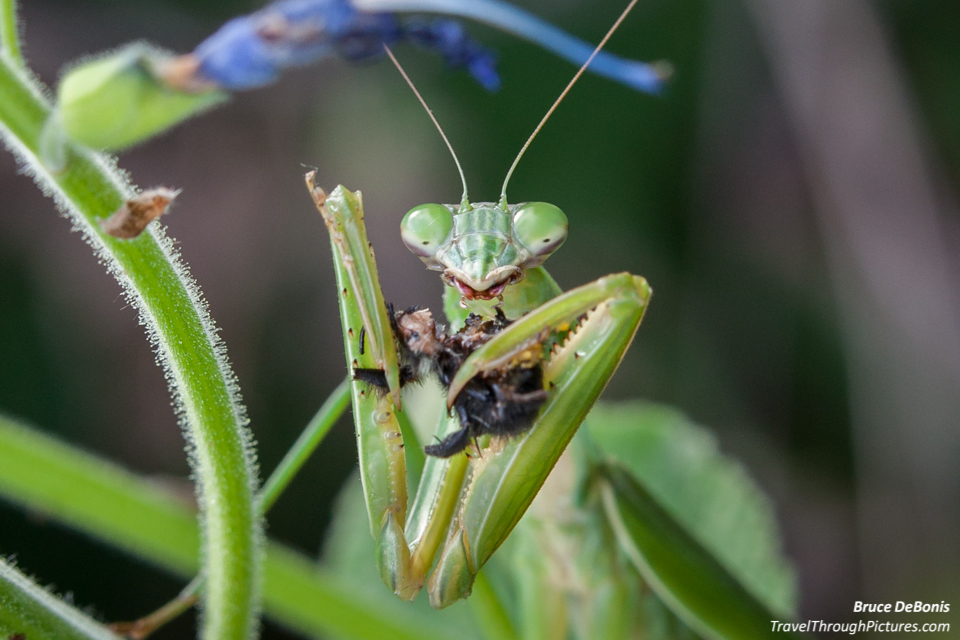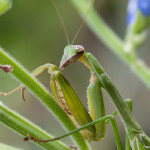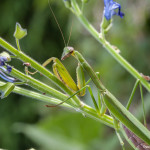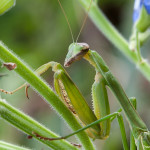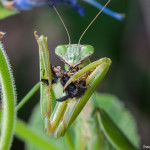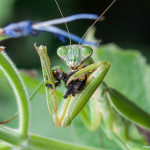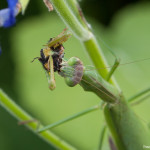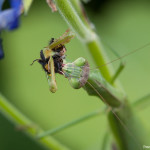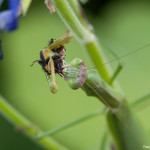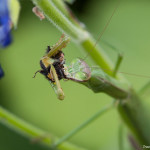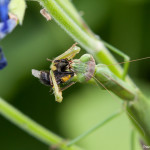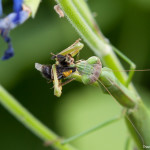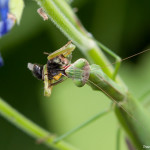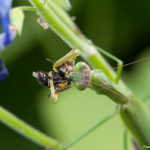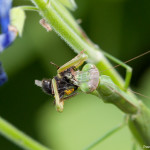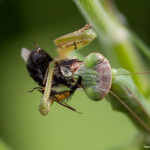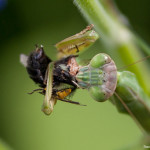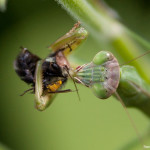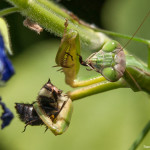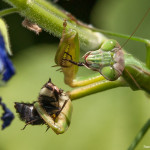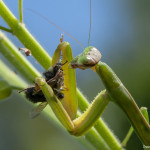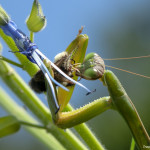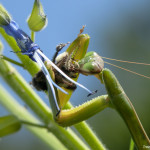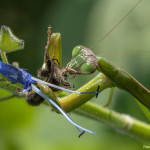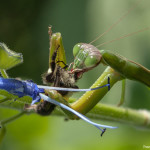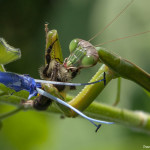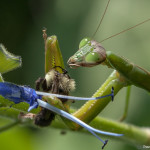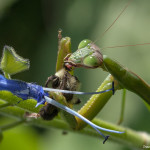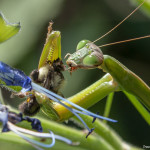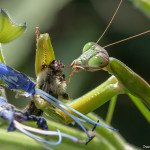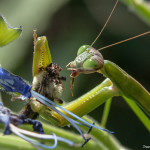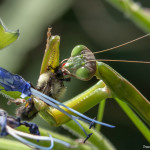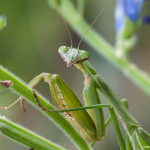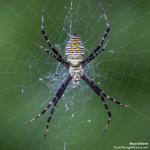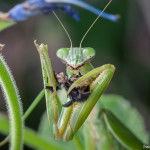Mantis versus Bee (Spoiler: Mantis wins)
WOW! Guts! Gore! Triumph! Loss! JUST GROSS. The mantis started at the bee’s head, and while the poor sucker was struggling to get free, the Mantis started…… to eat. It went quickly and all that was left were a smattering of legs and hard parts littered on the leaves below. He ate the whole thing.
I took a ton of shots. Normally, most of my catch are blurry or screwed up in some way, but I must be getting better at this hobby and many came out sharp and usable. Now the problem is that I had too many good shots. I usually would just pick a few and post them but I find these shots so goringly fascinating that I just went ahead and posted a ton of them. Enjoy!
I love it when I snap a photo of something other than a static object just sitting there. Catching something in the act, well that is a different picture altogether. Think about this for a moment: Why are National Geographic’s animal and bug photos so good? Really, think about it. Besides their technical excellence, they are special because they are capturing behaviors. Yes, you have to catch nature in the act of being to really have a special photo.
Luck or Free Will?
I have said it here before; most of my cool photos are luck. I just happen to be in the right place at the right time. My formula for tilting luck in my favor is simply to go out more. Just go to the gardens, ponds, nature reserves, or dangerous pedestrian crossings where stuff happens. The more you go there, the more luck you will have. Another factor is tenacity. You have to be willing to stand and stare for a long time. In nature, activity tends to happen in short bursts. Nature does not like to spend energy on useless activities like doing flips in the air for photographers. Bugs, animals, and whatever tend to sit still and hide while conserving energy. Then, when hungry or looking to mate, they get going and go quickly. If you want to catch the action, you have to wait for it.
So luck is a big part, but you can improve your luck by getting out there more and putting in some time. Sometimes I cheat by asking an expert.
Ask an Expert
I learned that Praying Mantises are largest in size and most plentiful at the end of the summer here near Philadelphia. At least I never see them early in the year. How did I find this guy? Well I just asked an expert. I asked a resident gardener at a local public park if he saw any mantises or cool buggage around. He immediately pointed me to this Praying Mantis and Orb Spider. Easy! Score!
Be Tenacious
When I found this Mantis, he was upside down, in bad light, and in a tough place to get a camera near. There was no way I was going to get a good photo of him. I thought about poking him with my finger in hopes of coaxing him into a better position, but I may scare him and he could fly away. So I left him for a while and shot this Orb Spider. The spider was in a totally impossible place and angle so the best I could do was take this mediocre picture of him. OK, back to the Mantis.
So I sat there and stared at him. What do I do? I sat there for about five minutes thinking about Obama Care and then BANG! The Mantis leaped with a 180 degree Air Jordan turn and snagged this Bumble Bee!! WOW! I can’t believe I saw the whole thing!!! Now to take some pictures!
The Camera Setup
I had my camera ready with my standard settings (click here for the settings). Always having your camera in the same start up state will help you make decisions and make them fast. I had my beautiful Canon 70-200 f/2.8 IS lens on my full frame Canon 5D MKII. But this lens and camera combo cannot focus up close for shooting bugs and flowers so I trick the system by slipping a Canon EF 12 II extension tube between the body and lens. An extension tube will allow any lens to focus closer than normal and give you a poor man’s macro lens. The tube will not degrade the picture quality at all because it does not contain a lens element. They are nothing but a ring that moves the lens farther from the camera body.
I could have shot with my standard settings, but I learned a few things about shooting bugs and things close up:
- You need a deep depth of field: Your depth of field is thin when close up, like fractions of an inch thin, so you will need to close down your aperture to a larger f/number to improve it. This will increase the depth of field and result in more of the bug being in focus. With a wide aperture, you can get a nice fast shutter speed and your bug’s eye may be in focus, but the back of his head and everything else will be blurred and out of focus.
- I wanted a quick shutter speed: Bugs move so to lessen bug motion blur with a narrow aperture, I would need to increase the ISO to 320. Increasing ISO decreases picture quality but will give you extra shutter speed.
So, I tried to get my aperture around f/8 to f/10 (I really should have gone more narrow than this) and get my shutter speed above 1/500 sec. Overall, I was happy with my shots but I could have done better by increasing my ISO a few more clicks and keeping my aperture at f/10 or f/12, while getting a tad more shutter speed. Live and learn.
The light was too bright and contrasty. The clouds occasionally would move in and smooth out the scene, but I had to work hard in software later to correct really bad, contrasty shots. Overall, I did the best I could with what nature gave me.
Move Around!
When you get lucky like I did this day, you want to “get the shot” so move things around. Don’t rely on one camera position. I did this while shooting a heron once and while I thought I nailed some killer shots of this bird catching fish, I found I ruined every one. There was a marsh reed between me and the bird and I could not see its blurred presence in my camera when I was shooting. In software, I saw the shots were useless. Darn.
Gonna Get a Real Macro One Day
While I am proud of these shots, they could have been way better. As you can see in the before and after photos below, I cropped heavily. I can get away with cropping like this since I have a very high-quality lens and high-megapixel full frame camera. If I had a real macro lens instead of my trick setup using an extension tube, they could have been really great.
I will get a real macro lens one day, but until then, you can’t beat having an extension tube in your bag at all times for just these times when nature snags you.
The Equipment:
- Canon 5D MkII
- Canon 70-200mm L f/2.8 IS II, with
- Canon EF 12 II extension tube
- Lightroom 5.2
- Manfrotto 190 CXPRO4 tripod
- Manfrotto 222 pistola head

